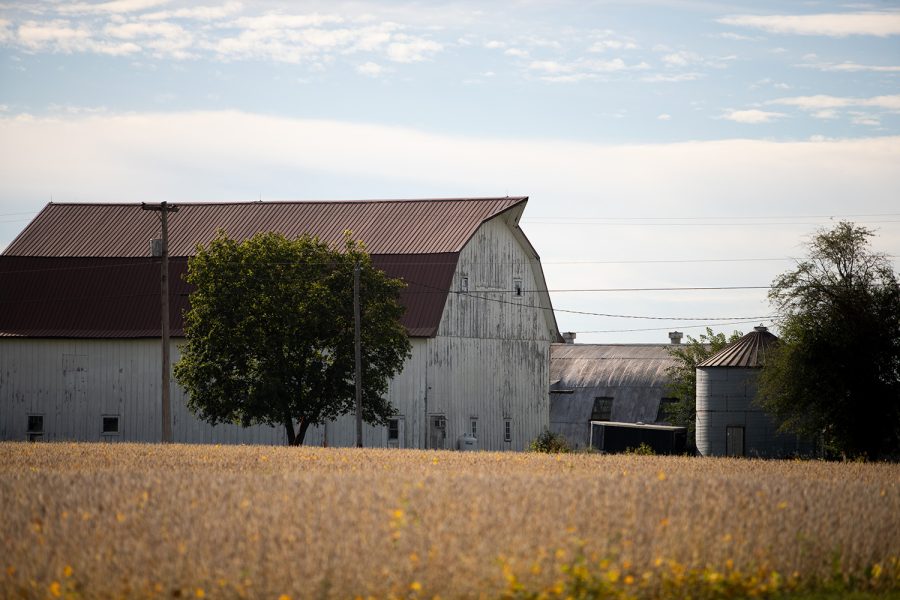Over the last several months, the Iowa agriculture economy has seen a tremendous downturn. Thousands of workers have been laid off at various manufacturing plants around the country.
These layoffs are part of a chain reaction caused by a downtrend in the agriculture economy as a whole. Layoffs continue to happen in Waterloo, adding to the hundreds laid off in Dubuque and Davenport, among others.
Cargill, an international ag food products manufacturer, has laid off thousands of workers around the world. The company has a plant in Cedar Rapids, where employees walked out in October.
The Iowa Farm Bureau Federation, a major organization that provides financial and educational benefits to the Iowa agriculture industry through various programs, released a report last month that states Iowa is facing $1.5 billion in losses and up to 11,400 jobs lost.
After a record year in 2022, the report says, farm incomes have dropped 25 percent as commodity prices face downward pressure and input costs continue to rise — inputs meaning machinery, buildings, seed, and fertilizer, among other things necessary to work in agriculture.
The report says that both direct and indirect people affected by these losses amounted to nearly 11,400 workers. Direct participants are those directly working in production, while indirect describes those who support the industry, like John Deere.
In the report, Farm Bureau President Brent Johnson said a bipartisan farm bill is an important step to create a stronger safety net for farmers.
Chad Hart, an agricultural economist and professor at Iowa State University, said the losses grow even greater because once jobs are lost, so are the dollars that go back into the economy.
“Since those jobs are lost, those salaries are no longer entering the local economy and not funding other jobs that feed into the economy,” Hart said.
He said a reduction in farmer income results in reduced investment and, eventually, a lack of demand for products like those produced by John Deere.
“That drop in farmer income snowballed into things like the John Deere layoffs,” he said. “So, Deere had less demand, meaning they produced fewer pieces of machinery, resulting in losses.”
He said the $1.5 billion figure sounds bad, but it adds up to only less than a percent of Iowa’s total $200 billion-plus economy. The figure is twofold; it is not as bad as it sounds annually, but historically, he said, it is the worst period of agriculture loss in 10 years.
RELATED: John Deere layoffs reflect farming challenges in global economic cycle
Ten years ago, Hart said, there were losses spurred by slow growth in ag product demand and a sudden increase in supply, both of which put downward pressure on prices. This year, demand is very strong, but he said farmers cannot make sufficient supply.
Hart said the future is uncertain, and the farming community does not quite yet know how severe these market conditions will get or for how long they will last.
However, he said, like in the past, farmers will be able to navigate the volatility and rapid change happening in the market — it’s only a matter of time.
“It took the industry a few years to build out of that [10 years ago] hole,” Hart said. “We’ve found the bottom of the hole, but we don’t know how long it will take to dig out.”
Johnson County Farmer Travis Spevacek said these tumultuous periods of profitability leave farmers waiting for things to recover. As producers, he said, farmers do not make prices. Rather, they can only take the price a market gives them and make good choices from that point.
He said these points where incomes are insufficient cause farmers to stop buying some things though, some things are vital to the industry while others can be held off. In this case, things like seeds and pesticides are necessary, but farmers can stop buying new farm equipment from manufacturers like John Deere until profitability recovers.
Spevacek said the future is uncertain, but profitability is the end goal. Volatility in agriculture is largely based on market conditions and elements as simple as weather. These are all pressures affecting how long the ag industry will need to recover.
He said recovery could begin in six months or a year or through another season. He said prices can tend toward fluctuation and that, ultimately, farmers require more return for what they’re producing for the market and farmers, locally and nationally, to begin to heal.



